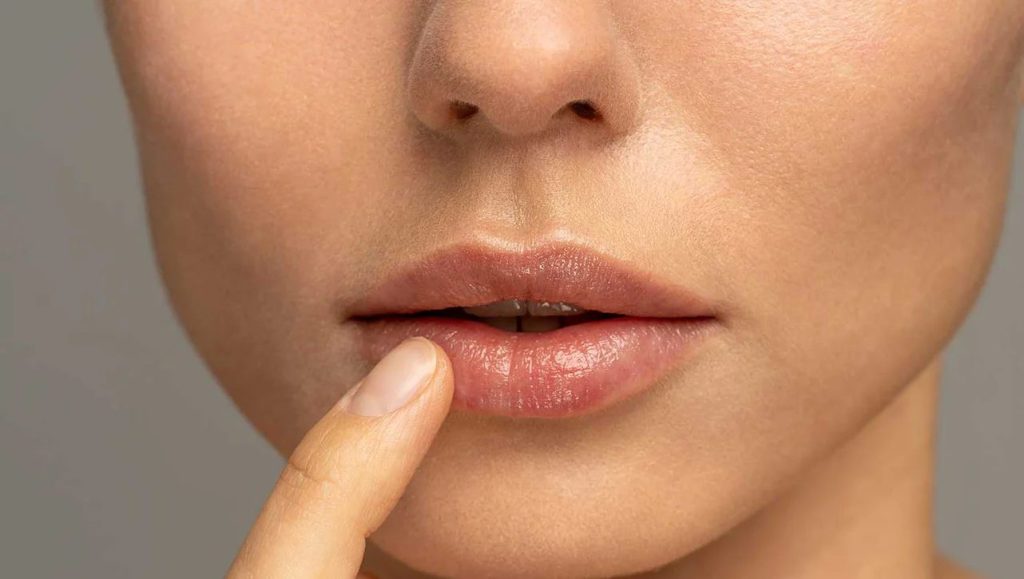Are you dealing with a cut lip? If so, you’re not alone! Cut lips are a common injury that can be caused by anything from contact sports to slips and falls. Fortunately, there are a few simple ways to treat a cut lip and help it heal quickly.
Here are 10 home remedies that can help:
- Clean the area: When treating a cut lip, it’s important to keep the area clean. Use an antibacterial soap or mild saline solution to gently wash the area. This will help reduce the risk of infection and promote healing. If the cut is deep, or if it’s not stopping bleeding after 15 minutes, you should seek medical attention. Once the area is clean, you can move on to other treatments.
- Apply a cold compress: Applying a cold compress to a cut lip can be an effective way to reduce swelling, numb the area and help stop any bleeding. You can apply a cold compress for 10-15 minutes several times a day to help reduce inflammation and promote healing. Be sure to wrap the compress in a clean cloth before applying it to the area to avoid further irritation.
- Use antiseptic ointment: Applying antiseptic ointment to a cut lip will help speed up the healing process and reduce the risk of infection. Before applying, make sure to clean the area with an antibacterial soap or mild saline solution. Once the area is clean, you can apply a thin layer of antiseptic ointment to the cut. This will help to keep the area protected and help the cut heal faster.
- Apply lip balm: Choosing a lip balm containing natural ingredients like beeswax or shea butter is an important step in treating a cut lip. These ingredients will help to keep the area moisturized and reduce any irritation. Additionally, lip balm can help to protect the cut lip from further damage and help it heal faster. Be sure to apply the lip balm several times a day to keep the area protected and promote healing.
- Avoid irritants: It’s important to avoid certain activities and foods that could irritate or aggravate a cut lip. Avoid smoking, drinking alcohol, or eating spicy or salty foods, as these can all cause further irritation and slow the healing process. Additionally, you should avoid activities that could cause further damage to the lip, such as contact sports. Taking these precautions can help ensure that your cut lip is able to heal faster and without any further irritation.
- Use petroleum jelly: Applying a small amount of petroleum jelly to the cut lip can help seal in moisture and promote healing. Petroleum jelly is an effective and affordable way to keep the area hydrated, reduce irritation, and protect the cut lip from further damage. Before applying, make sure to clean the area with an antibacterial soap or mild saline solution. Apply a thin layer of petroleum jelly to the cut lip several times a day to help keep the area moisturized and promote healing.
- Apply a compress of green tea: Applying a compress of green tea to a cut lip can be an effective way to reduce inflammation and speed up healing. Start by brewing a cup of green tea and allowing it to cool. Then, soak a clean cloth in the tea and apply it to the cut lip for 10-15 minutes several times a day. Green tea contains antioxidants that can help reduce inflammation and promote healing. Additionally, the tannic acid in green tea can help reduce bleeding and seal the cut.
- Eat foods rich in vitamin C: Eating foods rich in vitamin C, such as oranges and grapefruits, is an important part of treating a cut lip. Vitamin C helps to promote collagen production and wound healing. Additionally, foods high in vitamin C are high in antioxidants which can help reduce inflammation and speed up the healing process. Try to make these foods a part of your daily diet to ensure that you’re getting the nutrients you need for fast, effective healing.
- Stay hydrated: Staying hydrated is an important part of treating a cut lip. Drinking plenty of water can help keep the area hydrated and promote healing. Additionally, water can help to flush out any toxins that might be present in the area, further speeding up the healing process. Be sure to drink at least eight 8-ounce glasses of water a day to keep your body and cut lips healthy and hydrated.
- Take an over-the-counter pain reliever: Taking an over-the-counter pain reliever can be an effective way to reduce pain and inflammation associated with a cut lip. Non-steroidal anti-inflammatory drugs, such as ibuprofen, can help to reduce swelling and redness. Additionally, acetaminophen can be taken to help reduce pain. Always consult a doctor before taking any medication, however, to ensure that it’s the right choice for you.
Following these steps can help you treat a cut lip at home and encourage the healing process. However, if the cut lip is still causing pain or swelling after a few days, or if you’re experiencing signs of infection, you should seek medical attention.

